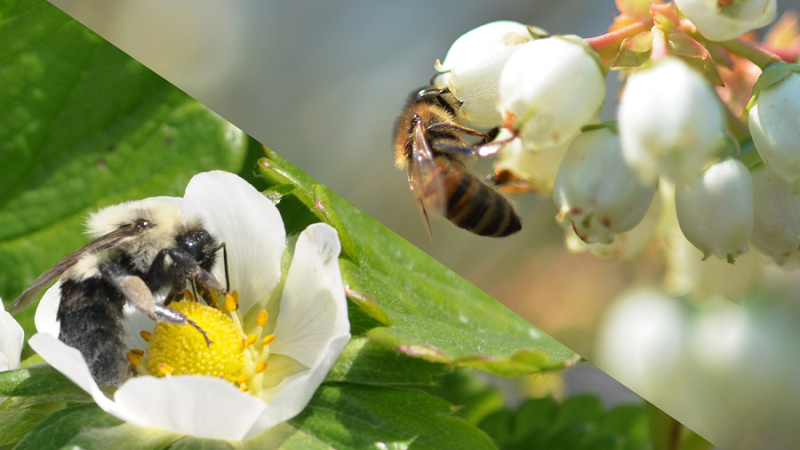Storm-Induced Flood Concerns a Reality for Tree Crops
While some of us have been ankle deep, or worse, in flooded farms, we have all been living with or watching the largest California flood and storm-associated damage and farming losses in more than 30 years. Much has been written about the anticipated crop shortages as well as the known and unknown hazards of flood sources, including those related to food safety, on a farm-specific and regional basis.
But it is important to recognize that prolonged flooding of soils associated with tree fruit and nut production have the potential for serious impacts not associated with food safety concerns. Here, I am reaching way back to my plant pathology past where I started with research on bacterial canker of stone fruit (a multifactor disease complex but largely attributable to Pseudomonas syringae) and Phytophthora canker of tree crops; more on this to follow.
ROW CROPS
California has been severely impacted by more than 15 successive atmospheric river events between Dec. 30, 2022, and March 22, 2023. The range of direct impacts have been severe with substantial economic losses to cool-season row crop and strawberry farming operations.
As the first series of storms hit before much of the scheduled planting had started along the Central Coast region, the flood impacts were more consequential in land and infrastructure damage but mostly due to the 30- to 60-day delays to transplant, replant, or seeding once flood waters receded.
Source assessments and soil testing mitigations are available to these growers within this established waiting period. For the Monterey County region, it has been estimated that approximately 9% of the roughly 220,000 acres in production were impacted by the successive storms.
STRAWBERRY
For strawberry growers, the restart decision-tree is straight-forward. Once immersed in flood waters, berry growers have no option available but to pull mulch cover and drip lines, remove the plants, clear debris and physical hazards, and repair washed-out access roads and beds. The potential for root and crown diseases, including Phytophthora spp., to develop after initial flooding and secondary spread in subsequent re-flooding or pooling is likely.
Estimates are 5% severe flood impacts on the roughly 40,000 acres planned for the 2023 season. While risk assessment research on strawberries is limited, available results indicate that survival of bacterial foodborne pathogens is very low on both immature and mature berries. Regardless, I am unaware that any grower or handler decided to strip a field to allow reflowering after floodwaters receded, regardless of whether it breached the shoulders of the beds.
TREE FRUIT AND TREE NUTS
Even close to my home in Yolo County there are sections of flooded almonds, which were in bloom during the second and third waves of the atmospheric rivers, and one can easily see signs of stress. There may be rare circumstances, as when winter floods traversing known hazards happen even well before harvest, when foodborne pathogen concerns enter the conversation.
However, prolonged flooding with limited water movement may result in poor soil oxygenation and buildup of damaging volatiles and microbial byproducts resulting in acute death or chronic decline. Sediment deposits may worsen these effects. There are many interacting factors of variety, soil type, compaction, rootstock, flood duration, degree of dormancy, nitrogen status, and a spectrum of other factors involved in impacts and their severity.
In general, almonds, peaches, and apricots, followed by sweet cherry, are less tolerant than other fruit and nut types. Interestingly, in some cases where soil porosity and drainage are excellent, extensive floodwaters may be beneficial to the orchard and contribute to local groundwater recharge.
Though not the only trigger for bacterial canker, a primary concern following flooding, especially if waters remain above the soil line and crown area for several days, is tree stress increasing infections even with no specific wound.
As with Phytophthora, P. syrinage is generally around in orchard soils, in small dormant lesions in bark, and in buds. Canker development can be rapid during and following bloom and early leaf-out under prolonged cool and rainy conditions in conjunction with flooding at the crown of the tree (as short as four to five days), along with a complex of other predicating factors, including prior frost injury. There are few corrective actions available once in an extended flood condition. More realistically, future preventive measures may be found in several IPM and other Extension resources.










